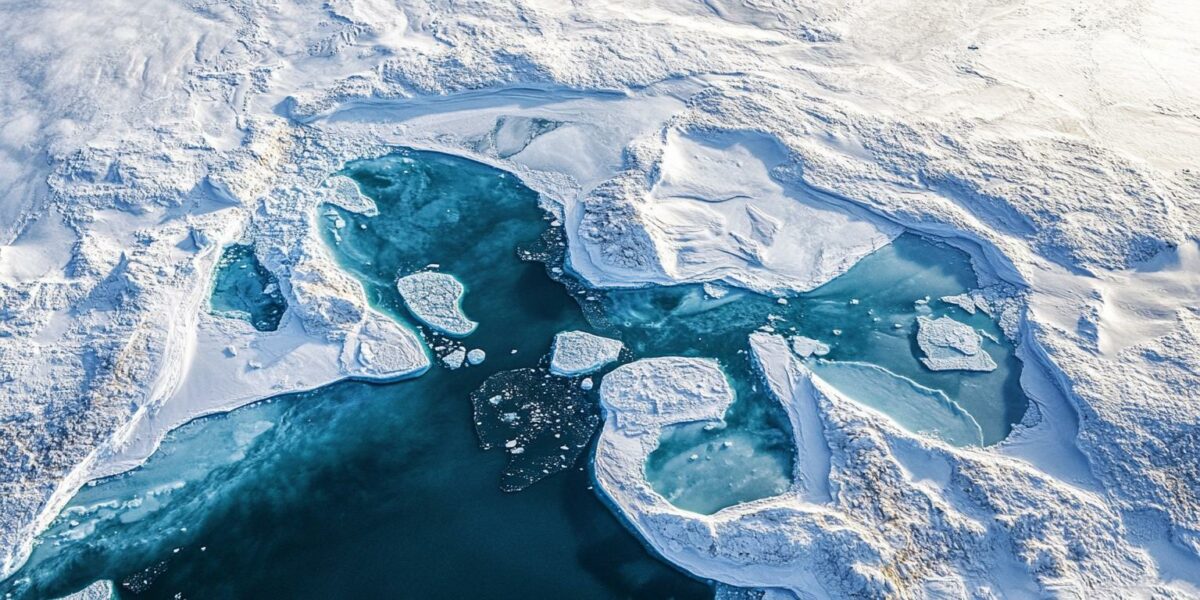Climate Change is Altering Earth’s Rotation
Recent NASA-funded studies reveal that climate change is causing Earth’s rotation to slow down. As ice sheets and glaciers melt, the planet’s mass distribution shifts, leading to changes in its spin axis. This phenomenon, known as polar motion, has been observed over the past 120 years.
The melting of ice and changes in groundwater levels are contributing to the lengthening of Earth’s days. Since 2000, this effect has accelerated, with days now growing longer by about 1.33 milliseconds per century. This rate is much faster than in the previous century.
The studies highlight how human-caused greenhouse emissions are driving these changes. The accelerated melting of the Antarctic and Greenland ice sheets is a major factor, influencing both the spin axis and the length of days.
These findings underline the significant impact of human activities on the planet’s physical characteristics. The redistribution of mass due to climate-related processes is having profound effects on Earth’s rotation and axis.
Understanding Polar Motion and Its Causes
Scientists have used a variety of methods to track polar motion, including very long baseline interferometry and satellite laser ranging. These techniques have provided detailed data on how Earth’s spin axis has shifted over time.
Research shows that 90% of the periodic oscillations in polar motion can be attributed to changes in groundwater, ice sheets, glaciers, and sea levels. The remaining fluctuations are due to Earth’s internal dynamics.
The patterns of polar motion linked to surface mass shifts repeat approximately every 25 years. This suggests that natural climate variations play a significant role in these oscillations.
Key contributors to polar motion include:
- Melting ice sheets and glaciers
- Groundwater depletion
- Sea level rise
Lengthening Days: A Sign of Climate Change
The length of Earth’s days has been increasing for millennia, a fact known from historical eclipse records. However, recent decades have seen a significant acceleration in this trend due to climate change.
From 2000 to 2018, the rate of day lengthening due to ice and groundwater changes was 1.33 milliseconds per century. This rate is faster than any period in the previous 100 years.
This increase is closely linked to the faster melting of ice sheets, which shifts mass from the poles towards the equatorial ocean. This shift causes Earth to decelerate, similar to an ice skater spreading their arms to slow a spin.
The potential for further changes is significant. If emissions continue to rise, the lengthening of days from climate change could reach 2.62 milliseconds per century, surpassing the effect of the Moon’s tidal pull.
The Broader Implications
These studies emphasize the far-reaching consequences of climate change. The alteration of Earth’s rotation and axis is just one of many effects that underscore the urgent need for action.
Understanding the relationship between climate change and Earth’s physical characteristics is crucial. It helps scientists predict future changes and informs strategies to mitigate these impacts.
These findings also highlight the interconnectedness of Earth’s systems. Changes in one aspect, such as ice melt, can have cascading effects on the planet’s dynamics.
Ultimately, the research underscores the profound influence humans have on the environment. The changes in Earth’s rotation and axis are a stark reminder of the need to address climate change and its many impacts.



DylanMoonshadow5
Great article! Can we reverse this effect by reducing our carbon footprint?
Katherine
How accurate are these measurements? Can we really detect changes of milliseconds per century?
joshua
So, are we going to have longer days to enjoy sunshine or what? 😂
henry
This is just another reminder of how serious climate change is. Time to act now!
FelixAurora
Does this mean our clocks will have to be adjusted more frequently in the future? 🤔
brysonspecter
Thank you for sharing, NASA! It’s fascinating to see how interconnected everything is. 🙏
ellie_seraphim
1.33 milliseconds per century doesn’t sound like much, but what are the long-term implications of this change?
isabelle_ethereal
Wow, this is mind-blowing! How exactly does melting ice affect Earth’s rotation? 🌍